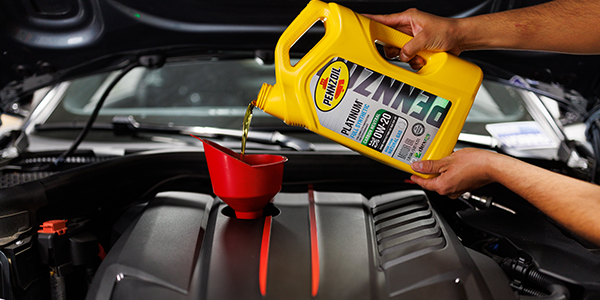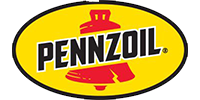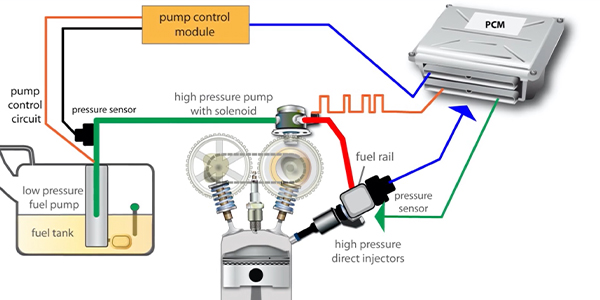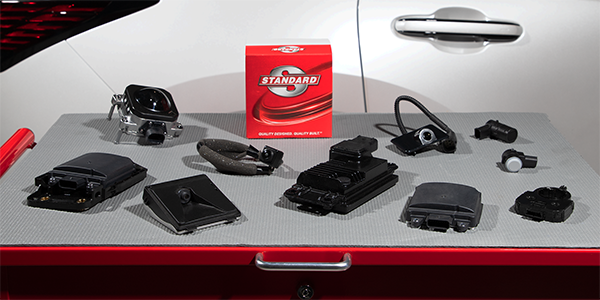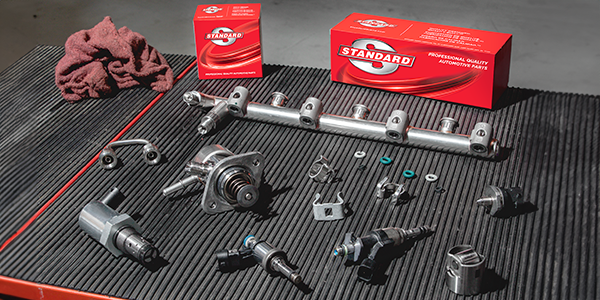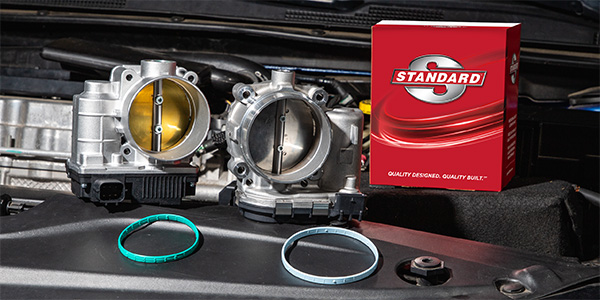Over the past decade, more and more shelf space has been dedicated to motor oils. New SKUs might be for new viscosities, original equipment manufacturer (OEM) specifications, and even motor oil formulations. This proliferation can create confusion when recommending the correct motor oil for the vehicle and customer. To help clear up the chaos, it is essential to understand what factors are driving these changes.
“Since the 1980s, there have been many mandates from regulatory agencies to improve fuel economy and reduce emissions,” said Sean Nguyen, Pennzoil Scientist and Technology Specialist, “The OEMs have responded with lighter vehicles, emission control devices and smaller engines. These smaller displacement engines produce more power per cubic inch than older larger displacement V6s and V8s that they replaced.”
OEMs have boosted efficiency and power while reducing emissions with technologies like turbocharging, direct injection and variable valve timing. All these new technologies directly impact the motor oil in the crankcase.
Viscosity
The motor oil’s viscosity refers to how the motor oil flows at a specified temperature. It is also referred to as the “weight” of the motor oil. The lower the viscosity rating or weight, the thinner the oil. The higher the viscosity rating, the thicker the motor oil.
In the past decade, motor oils have seen a significant reduction in winter weight viscosity. The winter weight is the first number in the viscosity specification, followed by a “W.” The winter weight reflects how the oil flows when it is cold.
Many of the latest motor oils on your shelves have a zero-weight winter specification (0W-XX). These lower viscosity motor oils require less energy to pump and can help the engine reach operating temperatures faster.
“Some of the fuel inefficiencies and emissions from a vehicle happen during a cold start,” said Nguyen. “If the engine is protected sooner and able to warm up faster, less fuel is wasted.”
The second number of a motor oil’s viscosity rating is the operational viscosity. This is measured when the motor oil reaches the engine’s operating temperature. Many of the newest motor oils have a lower viscosity rating to improve fuel economy.
“While the winter weight has changed, so has the operational viscosity,” said Nguyen. “In the past, the operational viscosity was rated at XX-30 or XX-40. Now, more than 90 percent of the factory fill motor oils are SAE 0W-20 or 5W-20. You can expect to see the introduction of 0W-12 and 0W-8 motor oils in the near future.”
0W-20 Retrofit
According to Pennzoil, SAE 0W-XX products are suitable for use in vehicles that recommend heavier 5W or 10W winter weight viscosity grades as long as the operational viscosity matches. 0 weight offers the same engine protection as their heavier weight counterparts.
Lighter motor oils provide added benefits of faster flow to reach critical engine components versus a 5W or 10W motor oil, especially in extreme cold conditions and at cold engine start-up. Also, 0W motor oils like Pennzoil Platinum Full Synthetic 0W-20 provide improved fuel economy compared to their 5W and 10W counterparts.[1]
Consumers can gain these benefits if they switch from an SAE 5W-20 to an SAE 0W-20 once their vehicles are no longer under manufacturer warranty. While the vehicle is under warranty, Pennzoil advises motorists to follow the OEM recommendation.
0W motor oils from the Pennzoil full synthetic portfolio have the same protection as SAE 5W and give the additional benefits of faster flow at start-up, enabling faster engine warm-up and better fuel economy.[2] For example, if an engine calls for SAE 5W-20 motor oil, you can use 0W-20 motor oil because the second number (20) is the most important number, and your engine is designed to take into account the viscosity of the motor oil at engine operating conditions. Remember, 0W-20 should not be used in a vehicle that calls for 5W-30.
Going Backwards
International Lubricants Standardization and Approval Committee (ILSAC), American Petroleum Institute (API) and OEM specifications drive changes to your motor oil inventory. But they do not want to create motor oils categories that might be considered legacy formulations that might be difficult to source for shops and consumers. To prevent this from happening, the majority of motor oils are backward compatible.
“The latest API and ILSAC specifications have evolved as engine performance requirements have increased. For example, if you compare the differences between ILSAC’s GF-5 and GF-6, it is a 20 percent improvement to fuel economy,” said Nguyen. “There were other improvements added to the new changes such as improved motor oil volatility control, engine wear protection, and cleanliness requested by many OEMs.”
GF-6 also introduced new tests to the ILSAC testing procedures. For example, GF-6 was the first ILSAC GF specification to introduce a timing chain wear test to measure wear and stretch; “Industry groups like the API, ILSAC and OEMs requires that a new motor oil specification must be backward compatible,” said Nguyen. “For example, if a customer has a 20-year-old vehicle, it might call for an API SJ or ILSAC GF-3 in the owner’s manual. The latest API SP or GF-6 will offer the same or better performance and protection.”
It is not uncommon for OEMs to issue new motor oil requirements and testing procedures when they introduce engines and vehicles. The manufacturer-specific requirements can cover specific technology only found on their engines.
“The US imports vehicles from all over the world. Every manufacturer makes their motor oil specifications for their vehicles,” said Nguyen. “For example, Mercedes has MB 229.51, Volkswagen has a VW 508 specification, and General Motors has dexos1®[2] .”
Most OEMs have unique motor oil specifications. Making sure you have the correct motor oil might require checking the back of the bottle or the product data sheet that can be found online. In addition, some motor oils can meet or exceed the requirements of multiple OEMs and specifications.
Synthetic and Conventional Oils
Synthetic motor oils are formulated with a base stock engineered at the molecular level. These synthetic base stocks can outperform conventional base stocks for viscosity, engine protection and even fuel economy.
“Some pros still believe in the myth that using synthetic motor oil can damage some engines,” said Nguyen. “Some of the stories come from the 1970s when synthetic motor oils were first introduced. The reality is that modern synthetic oils are compatible with engines that have been running conventional motor oils. At Pennzoil, we work to produce the most technologically advanced, highest-performing motor oils on the market. For example, Pennzoil Platinum Full Synthetic motor oil is designed for complete engine protection for top engine performance. It helps extend engine life and protects for up to 15 years or 500,000 miles, whichever comes first[3].”
Pennzoil Platinum SAE 0W-XX synthetic motor oils offer the same protection as 5W-XX and gives the additional benefits of faster flow at start-up, enabling faster engine warm-up and delivering better fuel economy.[4]
Resources
Helping customers select the correct motor oil for their vehicles can be complicated once you get past the viscosity numbers. The best information can typically be found in the parts information catalog. The next might be service information for the recommended motor oil and capacity. The last resort might be the owner’s manual. Motor oil manufacturer websites can also provide information for the specific vehicle and oil product line.
“For most applications, the recommended motor oil is listed in the owner’s manual. Pennzoil operates 1 (800) BESTOIL. This is directly connected to our technical information hotline,” said Nguyen. “Consumers, technicians and parts stores can get information for the correct oil and torque specifications for the drain plug and filter.”
[1] Based on Sequence VIF fuel economy test.
[2] Based on the latest industry standard.
[3] Up to 15 years or 500,000 miles, whichever comes first, guaranteed, if you exclusively use Pennzoil Ultra Platinum™ Full Synthetic motor oil, Pennzoil Platinum® Full Synthetic motor oil, and Pennzoil Platinum® High Mileage Full Synthetic motor oil. Your engine must have less than 125,000 miles and been manufactured in the past 72 months. To maintain your warranty, change your vehicle’s oil and oil filter at least as often as recommended by the vehicle manufacturer. Enrollment required. Keep your receipts. Other conditions apply. See Pennzoil.com/warranty to enroll and for full details and terms.
[4] Based on the latest industry standard.
This article is sponsored by: Pennzoil

